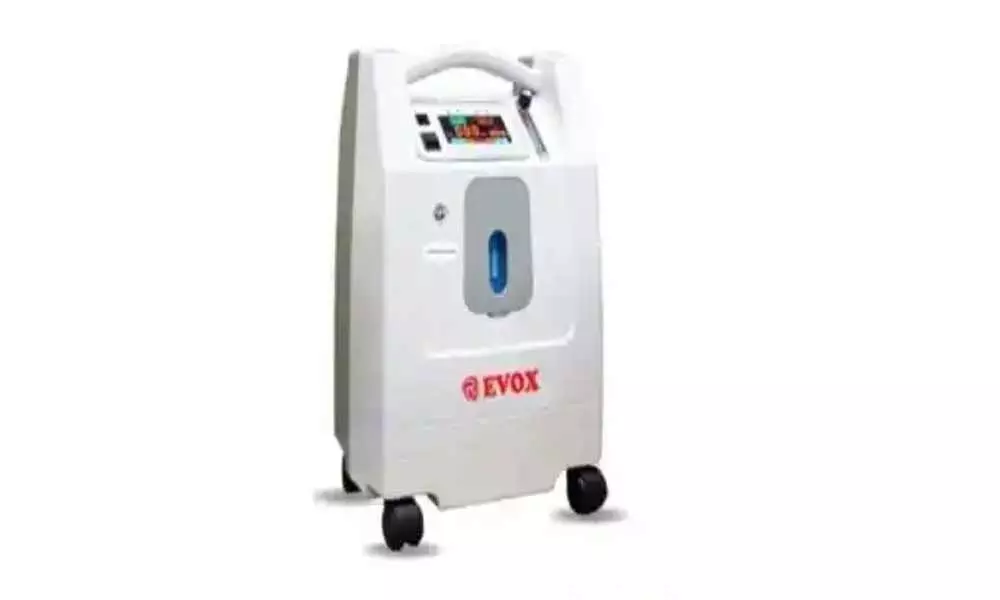Live
- Sir Sorabji Memorial cricket tourney held
- 3 including 2 women held in murder case
- SP slams UP govt, calls it orchestrated
- Shot In The Arm For Tribals… Girijan Coop Corpn Ropes In City Firm To Digitalise Petrol Bunks
- Complete failure of UP govt: Congress
- ‘Excavation rumour sparked violence, SDM, CO responsible’
- Cinematic legacy celebrated at SV University
- No permission needed for buildings up to 15 metres
- Do you support caste census? Which one will you prefer caste census or skill census?
- GHMC Commissioner attends Prajavani, receives 126 applications
Just In
Why Oxygen Concentrators has Become Most Sought After Device Now, and How Does it Work?


Oxygen Concentrators
The corona pandemic has created Oxygen crises across the nation. With the shortage of Oxygen cylinder supply, the O2 concentrators have become the most sought after device in the recent time.
The corona pandemic has created Oxygen crises across the nation. With the shortage of Oxygen cylinder supply, the O2 concentrators have become the most sought-after device in recent time.
What is an oxygen concentrator?
Oxygen concentrator is a medical device which concentrates oxygen from ambient air. Atmospheric air has nearing to 78% nitrogen, 21% Oxygen and other remaining gases makes the rest 1%.
The Most Sought after Device used for Oxygen Therapy
When compared to the computer monitor, Oxygen concentrator is a little bigger, and with the rise in the increase in the number of active corona cases, the oxygen cylinders have become shortage in supply across varied states in India. And the concentrator has now, the most sought after device used for oxygen therapy, especially in those patients who are under home quarantine and also it is for those hospitals, which are running out of oxygen.
How does it work?
The oxygen concentrator takes in air, and it filters with the help of sieve and it releases the oxygen back into the air and later it works on the remaining Oxygen.
The oxygen which has been both compressed as well as dispensed via a cannula, it is almost 90 to 95% pure. In concentrators, the pressure valve is fixed and it helps in regulating the supply, which range between 1-1 litres each minute.
As per the year, 2015 WHO report, the concentrators are designed in such a manner, that it would continuously operate and it would be capable of producing oxygen 24 hours a day, 7 days in a week and it can work efficiently up to 5 years or more.
Will this oxygen produced from concentrators pure enough?
The oxygen produced from the concentrators is nearing to 90 to 95% pure, but it is not as pure as LMO (99%). The experts state, that it would be good enough for covid-19 patients who have both, mild to moderate symptom, whose oxygen saturation levels are about 85% and more. However, these would not be suitable for those patients, in admitted in ICU.
Why you must not prefer using multiple tubes?
Yes, concentrators can be attached to the multiple tubes and two patients can have a supply of oxygen at the same time, but this practice must be avoided, so that it does not lead to cross-infection.
What distinguishes concentrators from liquid oxygen and LMO?
Oxygen concentrators are definitely an easy alternative to the cylinder, but the drawback is, it can only supply about maximum 5 to 10 litres of oxygen each minute, whereas those patients who are critically ill, they require around 40 to 50 litres of oxygen per minute, hence it is best suited only to those patients who are moderately ill.
The best parts of concentrators are, they are potable unlike the LMO, they must be stored and transported only in cryogenic tankers, no special temperature is required. Cylinders require refilling, whereas concentrators only require power source so that they draw in ambient air.
How do you compare, cylinders and concentrators with regard to cost?
The concentrators cost is around Rs.40, 000 to Rs.90, 000, these are very expensive when compared to cylinders. The cylinders cost is around Rs.8000 to Rs.20000. When you opt to buy concentrators, it is mere one time investment, apart from routing maintenance as well as electricity. For cylinders, the cost is more recurring as it involves both refilling and transportation cost.
The market
The industry experts have stated that, demand for the oxygen concentrators have increased from a mere 40.000 per annum to 30,000 to 40,000 a month. Dr. Rajiv Nath, who is forum coordinator for AIMED, it is an association relating to the medical device industry, it has estimated that, daily demand is around 1000 to 2000 concentrators, but we do not have enough manufacturers, who could help meet the demand.
It is largely, we are relying in import market; the big players are Philips and Longfian Scitech.

© 2024 Hyderabad Media House Limited/The Hans India. All rights reserved. Powered by hocalwire.com






